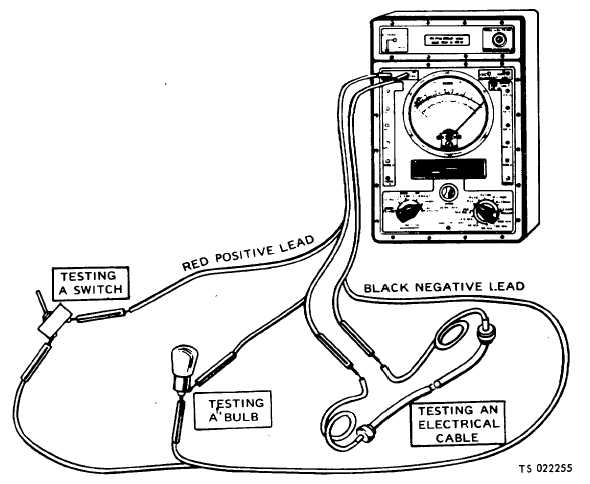TM 10-3510-208-34
NOTE
If the needle will not "zero", replace
the batteries. If the needle still will
not
"zero"
after
replacing
the
batteries, turn the meter in for repair.
(2)
Continuity Test. Continuity tests are
made to check for breaks in a circuit (such as the
switch, light bulb, or electrical cable) (fig. 2-3). To
make a continuity check, do the following steps:
(a) Set up and "zero" the multimeter
(fig. 2-2).
CAUTION
Failure to do the following step can
damage the multimeter.
(b) Disconnect the circuit being tested.
To be safe, disconnect the battery ground strap.
(c) Connect the meter probes to both
terminals of the circuit being tested. (The TS-352B/U is
illustrated (fig. 2-3) but the probes are connected to the
circuit the same way with all three multimeters).
Figure 2-3. TS-352 Continuity Test.
(d) Look at the meter needle.
1. If the needle swings to the far
right over the "0" on the top scale (on all three
multimeters), the circuit has continuity.
2. If the needle doesn't move, the
circuit is open (broken).
3. If the needle jumps or flickers
there is a loose connection in the circuit being tested.
(3)
Testing for Shorts. A short (or short
circuit) occurs when two circuits that should not be
connected have metal to metal contact with each other.
A short also occurs when a circuit that should
2-8

